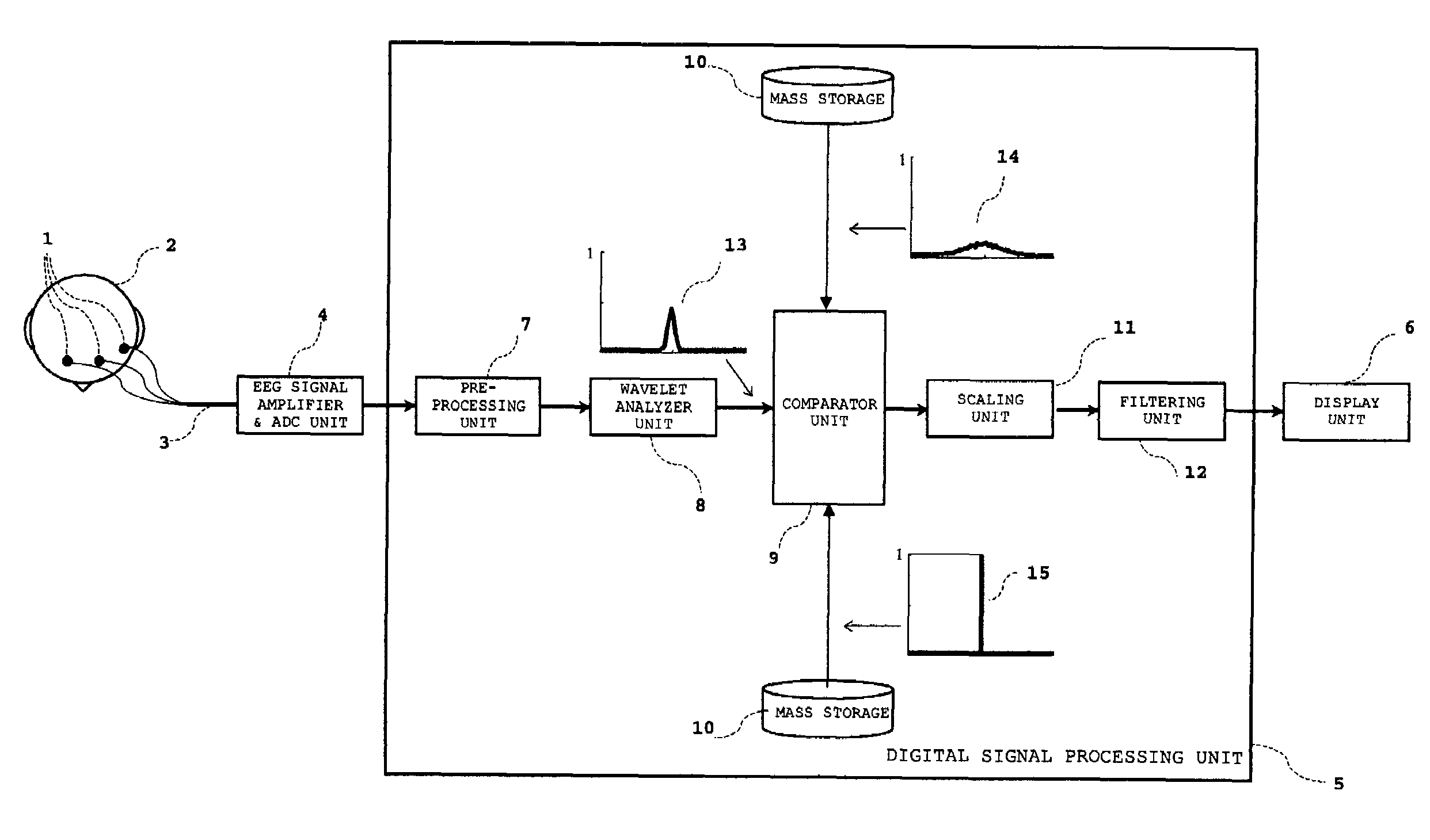Method and apparatus for the estimation of anesthetic depth using wavelet analysis of the electroencephalogram
a wavelet analysis and electroencephalogram technology, applied in the field of clinical anesthesia, can solve the problems of not providing unconsciousness at clinical concentration, time-consuming and experienced specialists, and difficulty in interpreting unprocessed or raw eeg signals, so as to reduce the time delay and precise feedback
- Summary
- Abstract
- Description
- Claims
- Application Information
AI Technical Summary
Benefits of technology
Problems solved by technology
Method used
Image
Examples
Embodiment Construction
Wavelet Analysis: Overview and Terminology
[0041]For better understanding of the detailed description of the invention, it is necessary to present a wavelet analysis overview and terminology.
[0042]Wavelet analysis represents a signal as a weighted sum of shifted and scaled versions of the original mother wavelet, without any loss of information. A single wavelet coefficient is obtained by computing the correlation between the scaled and time shifted version of the mother wavelet and the analyzed part of a signal. For efficient analysis, scales and shifts take discrete values based on powers of two (i.e., the dyadic decomposition). For implementation, filter bank and quadrature mirror filters are utilized for a hierarchical signal decomposition, in which a given signal is decomposed by a series of low- and high-pass filters followed by downsampling at each stage, see FIG. 4. This analysis is referred to as Discrete Wavelet Transform (DWT). The particular structure of the filters is de...
PUM
 Login to View More
Login to View More Abstract
Description
Claims
Application Information
 Login to View More
Login to View More - R&D
- Intellectual Property
- Life Sciences
- Materials
- Tech Scout
- Unparalleled Data Quality
- Higher Quality Content
- 60% Fewer Hallucinations
Browse by: Latest US Patents, China's latest patents, Technical Efficacy Thesaurus, Application Domain, Technology Topic, Popular Technical Reports.
© 2025 PatSnap. All rights reserved.Legal|Privacy policy|Modern Slavery Act Transparency Statement|Sitemap|About US| Contact US: help@patsnap.com



